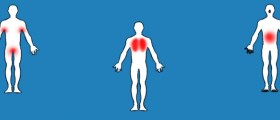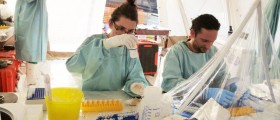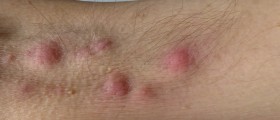
The plague is not that common in modern times, and it is essentially, a disease of rodents. A human can be infected if he or she is bitten by an infected flea that has fed on an infected rodent, for example.
Any serious outbreak of plague usually starts as disease outbreaks in rodents, and during these outbreaks, fleas have to search for new sources of blood because of the thinning rodent population.
Rats are affected by plague bacteria not only during epidemics, but they are often affected before epidemics in humans occur.
Villagers in China and India noticed that plague outbreaks would occur soon after they noticed a large number of dead rats.
The rat-flea vector relationship was discovered in 1898, during the Third Plague. It was noted that people who became infected did not have close contact with others that were infected by the plague, and that even having contact with dead rats did not mean that the person would catch the plague. Therefore, it was inferred that the fleas were playing a role in the transferring of the disease.
There are three forms of plague, bubonic, septicemic and pneumonic.
Bubonic plague becomes evident three to eight days after infection and includes symptoms such as chills, fever, diarrhea, headaches and the swelling of lymph nodes.
If it is not treated, the mortality rate for the bubonic plague is 50 to 90 percent.
In septicemic plague, there is skin bleeding and internal organs bleed as well, this creates black patches on the skin.
Untreated septicemic plague is universally fatal. People who died from this often died the same day that the symptoms appeared.
The pneumonic plague infects the lungs and it can be transmitted from person to person through respiratory droplets.
The initial symptoms cannot be distinguished from regular symptoms of everyday respiratory illnesses.
It can be fatal in one to six days if not diagnoses and treated immediately.
There are treatments for the plague that have been developed, thankfully.
There is streptomycin, which is taken twice daily as a shot for seven days. Chloramphenicol also and Tetracycline are other drugs that have been developed. The diagnosis and the doctor’s recommendation will decide what is best for the person to take.
More recently, Gentamicin has been developed, as well as Doxycycline, which is taken orally twice a day and is just effective as the intramuscular shots that are normally uses to treat most types of bubonic plague.
It is most important to see the doctor as soon as one assumes that they could have been infected by the plague, because time is of the essence with such a deadly disease, though in modern times, the appearance of the plague is very rare and often limited to free occurrences, especially in developed countries.

















Your thoughts on this
Loading...